The University Record, April 19, 1999
Sections:
• Life Sciences: Status and opportunity
• Implications for undergraduate, graduate education
• Implications for the Health System and academic medicine
• Science funding
• Development opportunities
By Jane R. Elgass
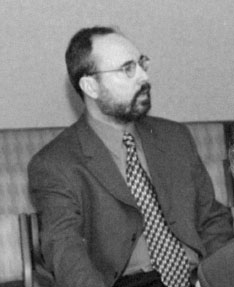
Members of the Board of Regents were briefed last week on the report of the Life Sciences Commission, “Challenges and Opportunities in Understanding the Complexity of Living Systems,” that was released Feb. 12. The report detailed five specific initiatives and some general strategies for improving life sciences at the U-M.
The five initiatives proposed by the Commission depend heavily on a collaborative environment, both physically and intellectually, and, taken collectively, are designed to place the University at the leading edge of intellectual advancement in the life sciences.
Two of the initiatives are termed “cross-cutting”–the Biocomplexity Initiative and the Biotechnology and Translational Research Initiative. The others are targeted to specific areas–Genomics and Complex Genetics, Chemical and Structural Biology, and Cognitive Neuroscience.
The report is on the Web at www.umich.edu/pres/committees/regreport.html. Copies of the report also are available by sending an e-mail message to [email protected] or calling 764-6270. Record coverage of the report is on the Web at www.umich.edu/~urecord/9899/Feb22_99/report.htm.
Life Sciences: Status and opportunity
Developing an understanding of the complexity of living systems is like writing a book, Huda Akil told members of the Board of Regents at last week’s briefing on “Life Sciences for the 21st Century.”
While we now have many of the letters of the alphabet and some of the words, we’re far from being able to write the sentences that will compose the chapters, explained Huda Akil, co-chair of the Life Sciences Commission and the Gardner C. Quarton Professor of Neurosciences, professor of psychiatry and co-director and senior research scientist, Mental Health Research Institute.
What is exciting, however, and what the University must move to incorporate in its teaching, scholarship and service, are the opportunities that are available now and, more particularly, will be available when work on the Human Genome Project is completed, Akil said.
All forms of life start from one form of material–DNA. The central question in biology is how we start with that and then bring about a broad diversity of life forms, ranging from humans to butterflies to poisonous snakes.
DNA lives in the nucleus of cells and is shaped into pairs called chromosomes. There are 26 pairs of chromosomes in humans, together containing the “code” for the operation of our entire body. DNA, Akil explained, is the language that is used to translate the master plan for the body. Each cell has the entire plan, she noted, but each doesn’t use the entire plan. Somehow each cell knows what to use to carry out its particular function.
With the Human Genome Project nearing completion, “the challenge is to understand that code,” she said, writing the book that will tell us how to construct a human brain, for example, out of the complex code.
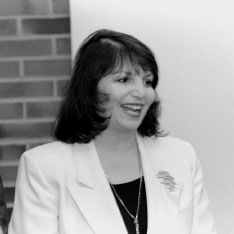
Akil cited one of her research projects–on the biology of depression–as an example of what launching the Life Sciences Initiative would mean to the University.
Depression has a genetic basis but is not entirely genetic, she explained. And there are two kinds genetic diseases–simple ones for which we’re becoming good at finding the defect (such as cystic fibrosis) and complex genetic diseases. Most common disorders fall into the latter category and are greatly influenced by environmental factors. “We think of these in terms of ‘vulnerability’ to a particular disease,” Akil noted.
“We’re interested in discovering why this is so, intrinsically and for society at large. We don’t know what genes make you vulnerable to depression.”
Projects of this nature, Akil noted, involve faculty and researchers from a number of disciplines and begin at very basic levels, eventually advancing to clinical studies and, hopefully, new ways to treat depression. “This work,” she added, “is relevant to understanding a lot about nature and the environment.”
A project such as Akil’s would be able to take advantage of work in all five areas recommended for development by the Commission:
“This is an exciting time,” Akil concluded. “We can now ask questions we couldn’t before. But the answers will be complex. We need to understand them and translate that understanding to the public good.”

One might think that delivery of food in Detroit is relatively simple, but it’s really a complex system, and understanding that system requires work by individuals from many fields, John H. Holland told the Regents in explaining the “complexity” side of the recommendations of the Life Sciences Commission.
“We have agents who are interacting and they learn and change over time,” adjusting and adapting to new conditions under which they work.
The human immune system also is a complex system. The agents are the antibodies that handle invaders and change all the time. “The immune system must learn as it develops. Within a two-year interval, every atom in you changes,” explained Holland, a Commission member and professor of electrical engineering and computer science and of psychology.
The immune system is very much like ecosystems, he said, a species existing within a complex set of interactions among other systems. The monarch butterfly, for example flies out in the open, and is able to do so because it tastes bitter, causing predators to avoid it. The viceroy butterfly, which tastes better, has adopted the monarch’s colors to avoid being preyed upon.
“That’s an example of why things such as HIV are hard to handle,” Holland noted. “They mimic things that are harmless. We don’t have principled ways to look at such things. A theory on biocomplexity would help.”
Holland also commented on what he termed the “market value” of a life sciences initiative. The highly regarded Santa Fe Institute has only “walk-in” faculty members and operates on a $5 million budget. Its annual two-day meeting brings in $1.5 million in funding from major firms across the country. Recognized experts in the life sciences can command $10,000 per day consulting fees.
“The field is new,” Holland added, and the University is uniquely positioned to move ahead.”
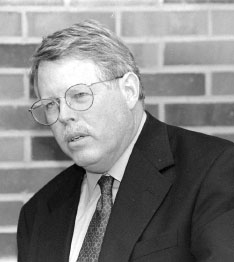
The Life Sciences Initiative “is the most exciting thing at the University since I’ve been here,” said Jack E. Dixon, the Minor J. Coon Professor of Biological Chemistry and chair of the Department of Biological Chemistry, and would enable the U-M’s participation in the next “revolution” in the sciences.
The discovery of DNA in the 1950s heralded a revolution. A second, in the 1970s, was marked by advances in recombinant DNA and molecular biology, resulting in the biotechnology industry and advances such as the creation of insulin.
“We are on the brink of another revolution” with the pending completion of the Human Genome Project, Dixon said, which also will offer a blueprint for the study of other organisms. “I am excited by the beginning of another revolution.”
Dixon noted that while the U-M may have started alone, other universities have seen the advent of the revolution and are preparing to take advantage of it. Schools such as Stanford and Harvard are planning major initiatives to capitalize on the new information that will come from the Human Genome Project, but each has a different focus.
“We need a variety of people to help us work on understanding cellular events,” Dixon said. The U-M’s special expertise “doesn’t reside in a single school or program, but rests on the interaction among units,” including LS&A, engineering and the health sciences schools.
Implementation of the Life Sciences Initiative will have an impact on the citizens of Michigan, on the education of undergraduate and graduate students, and on health care. There also will be opportunities for spin-offs of biotechnology companies.
“I hope Michigan will be a major player,” Dixon added. “We have major competition. It’s important to be in the forefront.”
Asked about the University’s future if it chooses not to be a major player, Dixon said, “We have a number of really terrific scientists. There are not enough in the country to go around. We can be predator or prey because our best people will be recruited.”
Echoing Dixon and emphasizing the need for timely action, Holland noted that the U-M “can be the leader, not just a player. But if we don’t act soon, the people who’ve given us our current position won’t be here.”
Implications for undergraduate, graduate education
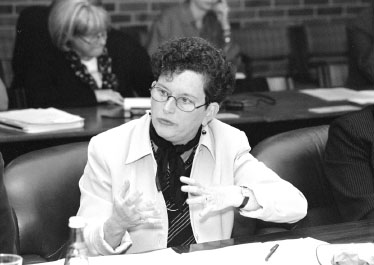
The U-M has “a responsibility as a great public university to involve undergraduate students in the research discovery process,” Provost Nancy Cantor told the Regents during the briefing.
“The Life Sciences Initiative will offer enhanced opportunities to galvanize and to push forward in transforming the way we teach our students. Within the framework of the initiative, we can offer our students the full richness of educational experiences that are maximally available at a great, public research university like Michigan.”
U-M students already have strong interest in life sciences-related work, Cantor noted. One-quarter and one-third of first-year students consider themselves to be pre-med. In 1998 more than 700 U-M students applied to medical school and 48 percent were accepted. U-M graduates represent more than 2 percent of the Americans admitted to medical schools, with a comparable number entering graduate schools in the life sciences and health professions. Approximately 20 percent (more than 800 students) of LS&A seniors will graduate this year with a major in a core life science field.
“The interest is already here,” Cantor noted. “Our students need to be presented with the kinds of interdisciplinary programs the Initiative would create. I would argue, broadly defined, that life sciences has become the literacy test for higher education,” in its use of information technology, emphasis on interdisciplinary work, and methodology expertise that is developed during collaborative research. “I believe our students should be exposed to the complex systems-type of work represented in this Initiative,” Cantor said.
Cantor also emphasized that the impact of the Initiative is not restricted to life sciences students. “We strongly believe that the Initiative has the potential to transform the entire campus, with abundant opportunities for connections and spill-over into disciplines not traditionally considered to be linked to the life sciences.”
The provost noted that the Initiative provides an opportunity to “expose students to thinking outside the discipline box, and it will become automatic for them to think in an interdisciplinary way. This is at the core of what we can give our students and is modeled in this Initiative.”
She cited an example of cross-disciplinary interaction that “began spontaneously and exemplifies the types of interaction the Initiative will support.”
Three faculty from three departments within three schools began meeting several months ago with their graduate students to talk about the future experimental demands of complex genetics. “The interface of these three disciplines and the problems they were wrestling with encompass the new science of bioinformatics,” Cantor explained, noting that the meetings have resulted in a draft proposal to the National Science Foundation to support more formal collaboration.
“The Life Sciences Initiative will provide opportunities to translate this type of informal, spontaneous interaction, now based on collaborations that grow up around specific research problems, to feed directly into designated programs for undergraduate education, for example, in the form of research opportunities or courses in bioinformatics.”
The Initiative, Cantor added, “allows us to expose students to the intersection of intellectual discovery and technology, preparing them with a modern education.”
“The three major areas on which we believe we must focus to provide our students with the best education we can are diversity of perspectives, information technology and collaborative work. All of these elements are woven into the fabric of the Life Sciences Initiative.”
Implications for the Health System and academic medicine
The five initiatives within the overall Life Sciences Initiative “are intimately related under the central theme of the complexity of living systems,” noted Gilbert S. Omenn, executive vice president for medical affairs. “All work to bring together theory and modeling of how function emerges from central elements.
“No other school has the breadth” found at the U-M to support such an Initiative, Omenn stated. “We have pillars of strength that other schools cannot match.”
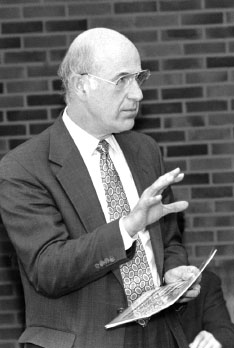
Omenn briefly outlined the essential elements of the Initiative that will have a campuswide impact:
There also are specific benefits for the Medical School and Health System, including the “coming together” of the Medical School and nearby units, some now physically separated from the Medical Campus; an opportunity to strengthen the basic sciences at the Medical School; a major increase in research space and faculty recruitment; and “high expectations for translation to clinical applications of the findings from basic biology, bioinformatics and bioengineering.”
Omenn noted that the Health System already is “moving to build additional strengths in anticipation of the Initiative. We are an academically-based health care provider and as such bring education and research to patient care. This is an extra value compared to other institutions,” he noted. “We have a stake in the outcome. It is important to us to proceed.”
Science funding
Overall research expenditures at the U-M have risen markedly since 1989, approaching the half-billion dollar mark in 1998, Fawwaz Ulaby, vice president for research, told the Regents. Among federal sponsors, the National Institutes of Health and National Science Foundation–the primary sources for life sciences funding–account for a total of 45.4 percent of those expenditures. In turn, in 1998, life sciences accounted for 45.5 percent of the University’s research expenditures by field of study.
On the national scene, the U-M ranks at the top in total R&D expenditures when the Navy’s Applied Physics Lab at Johns Hopkins University is removed from the totals.
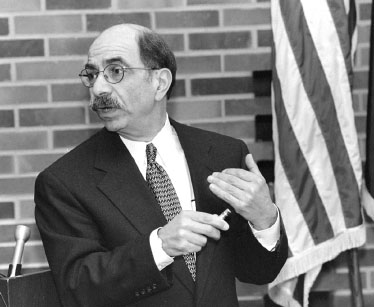
“Federal funding in the life sciences is expected to double in the next six to seven years,” Ulaby told the Regents, adding that the existence of multidisciplinary centers and institutes “will enhance our posture in attracting federal funding.”
Commenting on the proposed creation of a “scientific research corridor” within the state, Ulaby noted that President Lee C. Bollinger has joined the presidents of Wayne State and Michigan State universities in a proposal to the governor that would enable the three schools to cooperate in life sciences initiatives, drawing on and complementing the particular strengths of each institution.
The presidents have proposed that $50 million of the state’s income from the tobacco settlement be used for these initiatives, with $25 million shared among the three schools and the other $25 million awarded competitively for work at the three schools and the new Van Andel Institute in Grand Rapids.
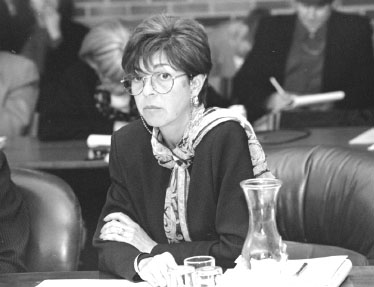
Ulaby also indicated that a major strategic plan is being developed for the Technology Management Office that will strengthen the University’s position in that area. A consultant has indicated that there is “high potential” in Ann Arbor for the development of biotechnology spin-offs.
The start of the war on cancer nearly 30 years ago was a “turning point that galvanized support to end life-threatening diseases,” noted Cynthia H. Wilbanks, vice president for government relations, “but much of the support in the interim has been ad hoc and fractured.”
And while a booming post-World War II economy and the launch of Sputnik by Russia in 1955 served to forge a strong partnership between government and education at all levels, general budgetary constraints and the budget deficit in the early 1990s led to a concern about the future of federal support for research.
Work by the 400-member Science Coalition over the past four years is changing attitudes, Wilbanks indicated, bringing the issue of support for research to the public’s attention and spurring action by others, including a group of governors who urged Congress to maintain university-based research as a priority.
Activity at the national level has implications for the state, Wilbanks noted, particularly in work being done to position the state to attract more technological development and move from the state economy’s reliance on the auto industry.
Public opinion surveys show “strong support for health research and education,” Wilbanks said.
“The state, in close collaboration with the major research universities and the private sector, is taking an active role in the technology transfer capabilities of universities that are being fueled by the engines of federal and industry research support,” she noted.
“The challenge is in educating the public. We need to talk openly about what research can do and how it affects people’s lives. The opportunities made possible by the Life Sciences Initiative are well-timed.”
Development opportunities
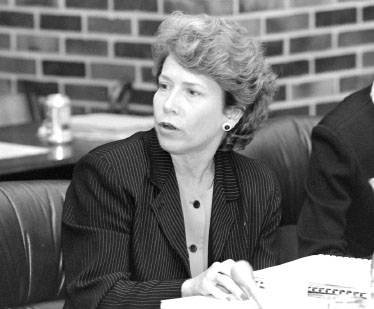
The University already is raising funds in the life sciences, with a number of commitments during and since the most recent campaign, said Susan K. Feagin, vice president for development. Predicting how much new money can be raised over the next two-to-three years is difficult but is being studied.
“Raising money in the life sciences is not easy to do,” said Feagin in commenting on conversations about the challenge with colleagues at other schools. It is a difficult field to understand, and “no one wants to feel stupid or intimidated” in asking questions. This is a problem with potential donors who don’t have a scientific background and “a hurdle to overcome,” she explained.
While Stanford University trustees have set up a multi-million dollar challenge fund for fellowships and Harvard has earmarked $200 million from endowment income and unrestricted gifts, the U-M will need a special strategy.
Critical ingredients of that strategy include:
“The University also needs to make it clear,” Feagin added, “that the Initiative is not the only priority. There are other core needs, such as the University Library.
“Support of the life sciences is not all the dollars we need and not the only area in which we need support.”

